Introduction: In this article, Mary Harrell-Sesniak searches old newspapers to find recruitment ads that induced men to enlist in the War of 1812. Mary is a genealogist, author and editor with a strong technology background.
Last year I wrote about the vast amount of genealogy data found in Civil War recruitment advertisements (see Civil War Recruitment Advertisements: What Induced Your Ancestor to Serve?). Incentives swayed the choice to enlist, and provide an interesting look into the decisions made by our veteran ancestors.
As a comparison, I decided to explore the War of 1812, which lasted from 18 June of 1812 to 18 February 1815. Were there similar newspaper ads offering similar perks like during the Civil War? Although I did not find as many variations as I found in Civil War ads, I did discover a number of intriguing offerings.
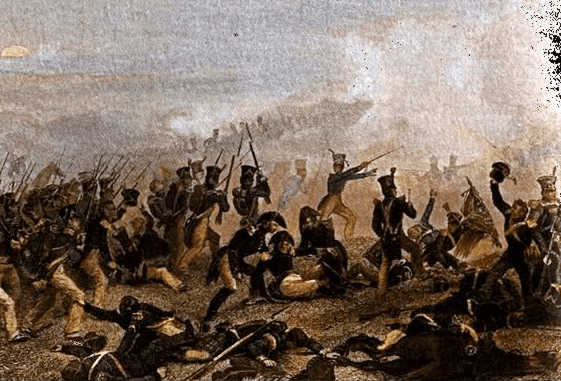
Background
Let’s take a brief look at what was happening during this time period.
The United States declared war on Great Britain for several reasons. Among them were:
- There were trade restrictions with France.
- American merchantmen found themselves impressed (forced to serve) into the Royal Navy.
- Native Americans, who opposed settlement on the western frontier, were receiving aid from Britain.
- The two sides traded insults, particularly after the British boarded an American frigate looking for British deserters. Research the Chesapeake–Leopard Affair of 22 June 1807 for more details.
What Was Offered?
After war was declared, various acts of Congress were established to help in the recruiting process. As seen in most wars, bounties played an important role. At various times and with varying amounts, they provided rations, advance pay, regular wages and bounty land (typically 160 acres) upon finishing one’s term of service.
1812
A November 1812 newspaper ad from Portland, Maine, stressed that able-bodied men of patriotism, between the age of 18-45, would receive an enlistment enticement of $16 with three months’ additional pay. Also, 160 acres of land would be provided at the expiration of five years, unless the enlistment was for 18 months.
Note: According to the FamilySearch Wiki, this stemmed from an issuing act of 24 December 1811.
Later there were other warrants for 320 acres of land in Arkansas, Illinois, Michigan and later Missouri. (For more information, see https://familysearch.org/wiki/en/US_War_of_1812_Bounty_Land_Warrants.)
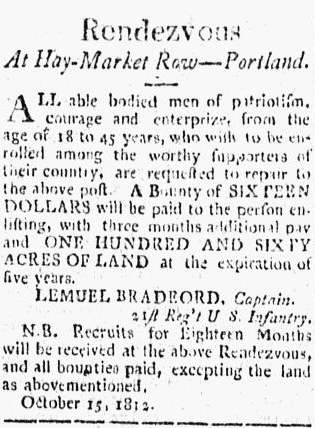
In the winter of 1812, volunteer artillerists were recruited for one-year terms to be stationed at the winter quarters. The sum of $14 per month (pay plus rations) was the same as regular troops received.
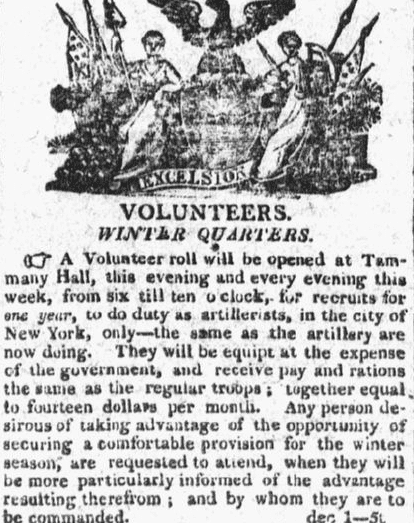
1813
In January of 1813, Capt. Jonas Holland invited “sons of freedom and independence” to join a troop of Light Dragoons. A bounty of $16, exclusive of clothing and rations, was offered, along with $8 a month pay. Upon discharge after completing the term, there would be an additional three months’ pay ($24) and 160 acres of land.
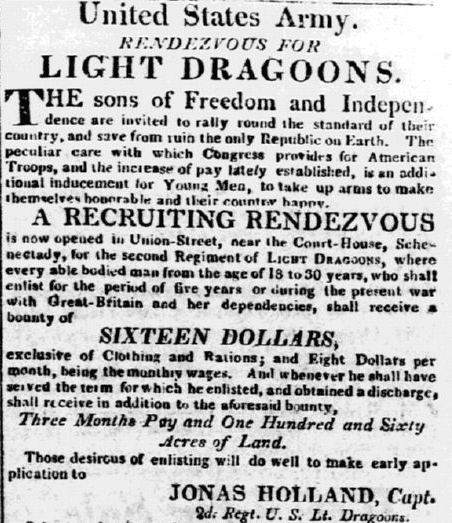
1814
A year later, the act of 5 July 1813 was in place. It had similar incentives to previous offers, with a few additions. Lt. Enoch Manning of Salem, Massachusetts, ran an ad promising a $16 bounty, $24 advance pay, $8 a month regular wages, warm clothing, good rations and – at the end of the war – 160 acres of land. He wrote:
What nobler object can a generous American have, than the protection of our most populous cities from threatened destruction? And who is so base that he would not avenge the unparalleled cruelties inflicted upon the inhabitants of Frenchtown and Hampton?
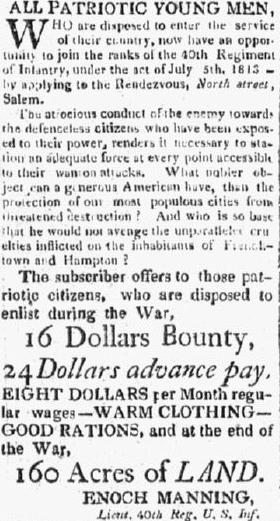
1815
By 1815, there was an increase in recruiting bounties and terms. Captain John A. Thomas, of the 25th Regiment U.S. Infantry, promised a $124 bounty for a five-year enlistment. $50 would be paid upon enlistment, $50 when mustered, and $24 upon discharge, $8 per month pay, rations and clothing, and the customary bounty of 160 acres of land.
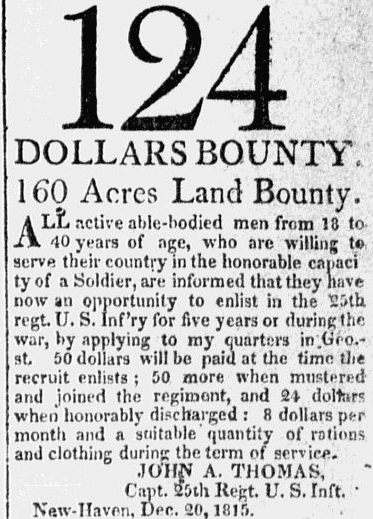
Promised Rations
Curious about the promised rations, I searched for newspaper articles about War Department proposals, and found this from 14 July 1813:
Good and wholesome rations needed to be in sufficient quantities 6-months in advance and to be transportable according to the discretion of the commanders:
- 1¼ pounds of beef, or ¾ of a pound of salted pork
- 18 ounces of bread or flour
- 1 gill of rum, whiskey or brandy (about ¼ pint)
- 2 quarts of salt to every 100 rations
- 4 quarts of vinegar to every 100 rations
- 4 pounds of soap to every 100 rations
- 1½ pounds of candles to every 100 rations
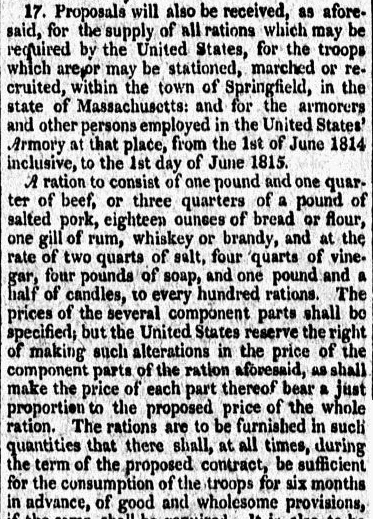
If you haven’t yet searched recruiting ads corresponding to ancestral service during the War of 1812, I welcome you to seek details within GenealogyBank’s Historical Newspaper Archives.
Related Articles:

I have an ancestor who served from Oct 1812 – April 1813. He was from Fairfax County, Virginia. However, he served in northwestern Pennsylvania and in the Ohio area, where he was discharged (Fort Washington). There was probably somebody recruiting for that area in Fairfax to get people to come up and join there, but he only joined for six months, and returned back to Fairfax, Virginia, where my ggg-grandfather was born in 1814. Do you have any information about recruiting efforts in Fairfax County, Virginia? He was later awarded 80 acres for his service in the war of 1812. And from some of your notices, I see it was 160 acres for a year, so 80 acres for half a year makes sense. Any information you can provide is greatly appreciated!
Cathy
Nice to read your comments. I don’t have enough information to guide you, but I would recommend networking with historical societies in the locations you mentioned and pursuing land records. Try searching pension records at Fold3, a subscription service.
Mary
Thank you, Mary! I have his pension record from Fold3 (also posted on the National Archives website), but it doesn’t say how he found out about the call for service. I’ll continue searching! Thank you!
You’re very welcome. Good luck with your continuing research.